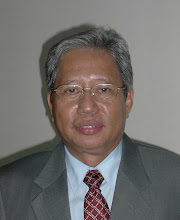Bintulu Sewerage System
Bintulu Sewerage System is a Centralized Sewerage System, and it is the only town in Sarawak that uses this system. Now Kuching City is also constructing the same centralize system. However, Bintulu is facing problems in managing the system. As reported in the Borneo Post, March 26, 2010, Kidurang assemblyman has called on the authority to set up a "special task force" to manage the system. This is due to the overflowing manholes at many places. The overflowing sewerage is actually raw sewage coming straight from the toilets and bath rooms of the houses and shops. Many estates do not have septic tank anymore and the waste water are directly connect into the pipe system that carry the discharge into the oxidation pond.
Kuching City Sewerage System
Kuching city had been declared as "Bandaraya" since 1988, and furthermore to improve the environmental quality and the image of the city as a "Healthy City", and "Bandaraya Lestari" , a centralized sewerage system is now underconstruction see Figure below:
Bintulu Sewerage System is a Centralized Sewerage System, and it is the only town in Sarawak that uses this system. Now Kuching City is also constructing the same centralize system. However, Bintulu is facing problems in managing the system. As reported in the Borneo Post, March 26, 2010, Kidurang assemblyman has called on the authority to set up a "special task force" to manage the system. This is due to the overflowing manholes at many places. The overflowing sewerage is actually raw sewage coming straight from the toilets and bath rooms of the houses and shops. Many estates do not have septic tank anymore and the waste water are directly connect into the pipe system that carry the discharge into the oxidation pond.
Kuching City Sewerage System
Kuching city had been declared as "Bandaraya" since 1988, and furthermore to improve the environmental quality and the image of the city as a "Healthy City", and "Bandaraya Lestari" , a centralized sewerage system is now underconstruction see Figure below:
 |
Source: Program Book Majlis Pelancaran Projek Sistem pembetungan Bersepadu Bandaraya Kuching This system collects wastewater from kitchens, bathrooms, wash areas (greywater) and toilets (Blackwater) to be channelled through an underground pipes system into a sewerage treatment plant. The plant treats the wastewater before discharging back into the environment with an acceptable quality. More information please visit Sarawak Sewerage Services Department website, http://www.ssd.sarawak.gov.my/ |

Comments
The question to ask is: Why does the manhole overflow? The most probable reason is that pipes have collapsed because of bad construction. I recently completed works for a CCTV company which does CCTV work on underground sewerage pipes. The number of subsidence which should have been re-excavated and re-laid is unbelievable.
Many repair works that should have been done were not done. the problem you are complaining of is imminent in Kota Kinabalu.
I had tried getting the contractor and JKR Sabah to get it repaired before the defect liability period is over but nothing has been done to date.
You may read more in my blog:
http://www.vemmaexperience.com